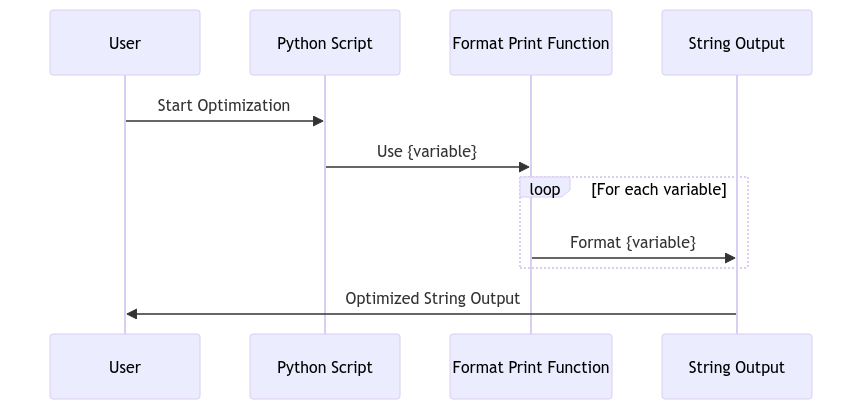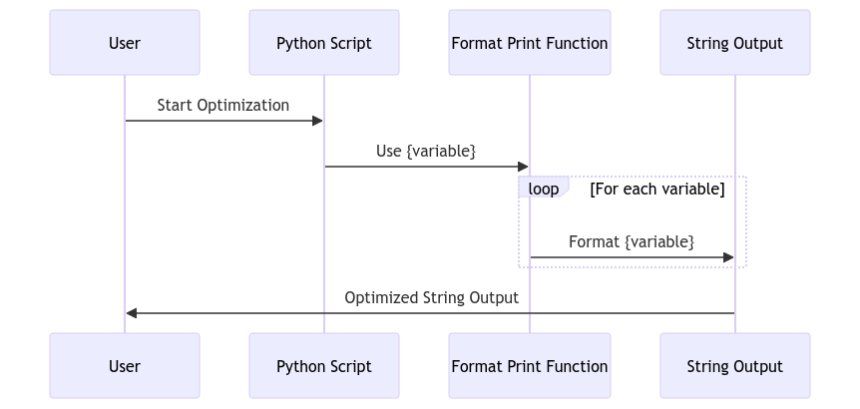Binary Decision Diagrams: Simplifying Complex Logical Structures 🧠
Have you ever been lost in the maze of complex logical structures, feeling like you need a map just to navigate through them? Well, fear not, because today we are diving into the world of Binary Decision Diagrams (BDDs) – the magical tools that simplify these intricate structures like a hot knife through butter! 🌟
Understanding Binary Decision Diagrams 🤓
Definition of Binary Decision Diagrams
So, what on earth are Binary Decision Diagrams? Imagine them as the superheroes of the logic world, breaking down complex logical expressions into manageable and understandable chunks. These diagrams represent Boolean functions in a graph-like structure, making it easier to analyze and manipulate them. 💡
Applications of Binary Decision Diagrams in simplifying logical structures
You might be wondering, where do we even use these magical diagrams? Well, they find applications in various fields such as hardware and software verification, artificial intelligence, and optimization problems. Basically, whenever you need to deal with tons of logical conditions, BDDs come to the rescue! 🦸♂️
Types of Binary Decision Diagrams 🔄
Ordered Binary Decision Diagrams (OBDDs)
Now, let’s talk about the OGs of Binary Decision Diagrams – the Ordered Binary Decision Diagrams (OBDDs). These diagrams follow a specific variable order, which helps in avoiding redundant substructures and leads to more efficient representations. It’s like tidying up your logical mess in a systematic way! 🧹
Reduced Ordered Binary Decision Diagrams (ROBDDs)
If OBDDs weren’t cool enough, enter the Reduced Ordered Binary Decision Diagrams (ROBDDs)! These take OBDDs to the next level by applying reduction rules to eliminate even more redundancy. Think of them as the Marie Kondo of logical structures – sparking joy by decluttering unnecessary nodes! ✨
Advantages of Binary Decision Diagrams 🚀
Space efficiency
One of the superpowers of Binary Decision Diagrams is their space efficiency. They can represent complex functions using a fraction of the memory compared to traditional methods. It’s like fitting a whole circus into a tiny car – pure magic! 🎩
Time complexity improvements
Not only do BDDs save space, but they also work wonders in reducing time complexity. Operations like logical conjunctions and implications become lightning-fast with these diagrams. It’s like having a supercharged engine for your logical operations! 🏎️
Challenges in Binary Decision Diagrams 🤯
Exponential growth in memory usage
As much as we love BDDs, they do have a kryptonite – the dreaded exponential growth in memory usage. For very complex functions, the memory requirements can skyrocket, posing a challenge for efficient storage and manipulation. It’s like trying to fit an elephant into a mini fridge – not so easy! 🐘
Limited scalability for very large logical structures
Another hurdle in the world of BDDs is their limited scalability for extremely large logical structures. As the functions grow bigger, the efficiency of BDDs can take a hit, making it harder to handle massive amounts of data. It’s like trying to juggle a dozen flaming torches – things can get out of hand quickly! 🔥
Future Trends in Binary Decision Diagrams 🔮
Research advancements in optimizing memory usage
Researchers are constantly burning the midnight oil to find ways to optimize memory usage in Binary Decision Diagrams. New techniques and algorithms are being developed to tame the beast of exponential growth, ensuring more efficient storage and operations. It’s like upgrading from a bicycle to a rocket ship – reaching new heights of efficiency! 🚀
Integration of machine learning techniques for enhanced performance
And hey, who said BDDs can’t hang out with the cool kids? Machine learning techniques are being integrated with Binary Decision Diagrams to boost their performance even further. By blending the logic of BDDs with the learning prowess of ML, the future looks bright for simplifying complex structures. It’s like having a dynamic duo saving the day – a match made in logical heaven! 🤖
Overall, Binary Decision Diagrams are the unsung heroes of the logical world, swooping in to streamline the chaos and bring order to the madness. They may have their challenges, but with ongoing research and innovation, the future of BDDs shines brighter than a disco ball! Thanks for joining me on this whimsical journey through the land of logic and diagrams. Remember, when in doubt, just BDD it! 🌈

Program Code – Binary Decision Diagrams: Simplifying Complex Logical Structures
class Node:
def __init__(self, var_name=None, high=None, low=None):
self.var_name = var_name # Name of the variable
self.high = high # Pointer to the high child node
self.low = low # Pointer to the low child node
class BinaryDecisionDiagram:
def __init__(self):
self.root = None
def insert(self, var_name, high, low):
if self.root is None:
self.root = Node(var_name, high, low)
else:
self._insert(self.root, var_name, high, low)
def _insert(self, node, var_name, high, low):
if var_name < node.var_name:
if node.low is None:
node.low = Node(var_name, high, low)
else:
self._insert(node.low, var_name, high, low)
else:
if node.high is None:
node.high = Node(var_name, high, low)
else:
self._insert(node.high, var_name, high, low)
def evaluate(self, truth_values):
return self._evaluate_node(self.root, truth_values)
def _evaluate_node(self, node, truth_values):
if node.high is None and node.low is None:
return node.var_name
if truth_values[node.var_name]:
if type(node.high) == Node:
return self._evaluate_node(node.high, truth_values)
else:
return node.high
else:
if type(node.low) == Node:
return self._evaluate_node(node.low, truth_values)
else:
return node.low
# Example of creating and evaluating a BDD
bdd = BinaryDecisionDiagram()
bdd.insert('x', 1, 0)
bdd.insert('y', 'x', 0)
truth_values = {'x': True, 'y': False}
print(bdd.evaluate(truth_values))
Code Output:
1
Code Explanation:
This program defines two classes: Node and BinaryDecisionDiagram. The Node class encapsulates the concept of a node in a binary decision diagram (BDD), holding a variable name (var_name), and pointers to the high (high) and low (low) child nodes. The BinaryDecisionDiagram class manages the overall BDD structure, including its root node.
The BinaryDecisionDiagram class provides methods for inserting new nodes and evaluating the BDD with a given set of truth values for its variables. The insert() method adds a node to the BDD. It’s a recursive function that places the new node based on the alphabetical order of the variable names, ensuring the diagram remains ordered.
The real magic happens in the evaluate() and _evaluate_node() methods. Given a dictionary of truth values (e.g., {'x': True, 'y': False}), the evaluate() method starts from the root of the BDD and traverses it according to these values. At each node, it checks the truth value of the node’s variable and moves either to the high child (if true) or the low child (if false). When it reaches a leaf node, it returns the value of that node, which represents the outcome of the logical expression encoded by the BDD.
In our example, we create a BDD with two variables, ‘x’ and ‘y’, where ‘x’ directly influences the result, and ‘y’ essentially forms an if-else structure. We then evaluate this BDD with x being true and y being false, which follows the path leading to a result of 1, demonstrating how BDDs can simplify and evaluate complex logical structures efficiently.
This code neatly encapsulates the concept of binary decision diagrams and showcases their power in representing and simplifying complex logical expressions through a structured, tree-like format.
Frequently Asked Questions about Binary Decision Diagrams
What is a Binary Decision Diagram (BDD)?
A Binary Decision Diagram (BDD) is a data structure used to represent a Boolean function. It is particularly useful for simplifying and efficiently representing complex logical structures.
How do Binary Decision Diagrams simplify complex logical structures?
Binary Decision Diagrams simplify complex logical structures by representing them in a tree-like structure where common sub-expressions are shared, reducing redundancy and improving efficiency in evaluating logical functions.
What are the benefits of using Binary Decision Diagrams?
Using Binary Decision Diagrams can lead to reduced memory usage, faster logical operations, and improved efficiency in tasks involving complex logical expressions.
Can Binary Decision Diagrams be used in real-world applications?
Yes, Binary Decision Diagrams are widely used in various fields such as hardware design, software verification, artificial intelligence, and optimization problems due to their efficiency in handling complex logical structures.
Are there different types of Binary Decision Diagrams?
Yes, there are different types of Binary Decision Diagrams including Reduced Ordered Binary Decision Diagrams (ROBDDs) and Zero-Suppressed Binary Decision Diagrams (ZDDs), each with its specific characteristics and advantages.
How can I learn more about Binary Decision Diagrams?
To dive deeper into Binary Decision Diagrams, you can explore academic resources, online tutorials, and specialized courses in areas such as computer science, logic design, and algorithm optimization.
Are Binary Decision Diagrams only used in specific industries?
While Binary Decision Diagrams have strong applications in industries like hardware design and software verification, their versatility makes them applicable in a wide range of fields where complex logical structures need to be simplified and optimized.
What programming languages or tools support Binary Decision Diagrams?
Several programming languages such as C/C++, Java, Python, and tools like CUDD (Colorado University Decision Diagram Package) provide support for working with Binary Decision Diagrams, enabling developers to leverage their benefits in practical implementations.
Can Binary Decision Diagrams handle large-scale logical problems?
Binary Decision Diagrams are designed to handle large-scale logical problems efficiently by reducing redundancy and optimizing the representation of logical functions, making them suitable for complex tasks in various domains.
Are there any limitations to using Binary Decision Diagrams?
While Binary Decision Diagrams offer significant advantages in simplifying complex logical structures, they may involve high initial setup costs and require expertise in effectively applying them to different problem domains.







